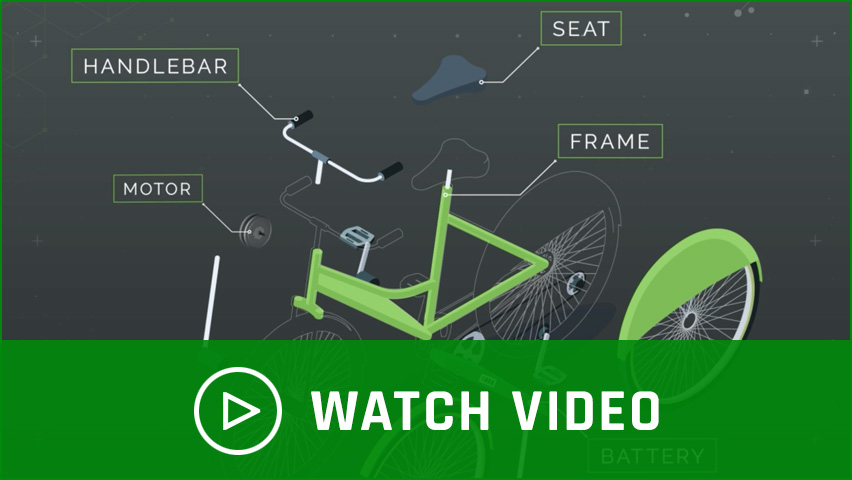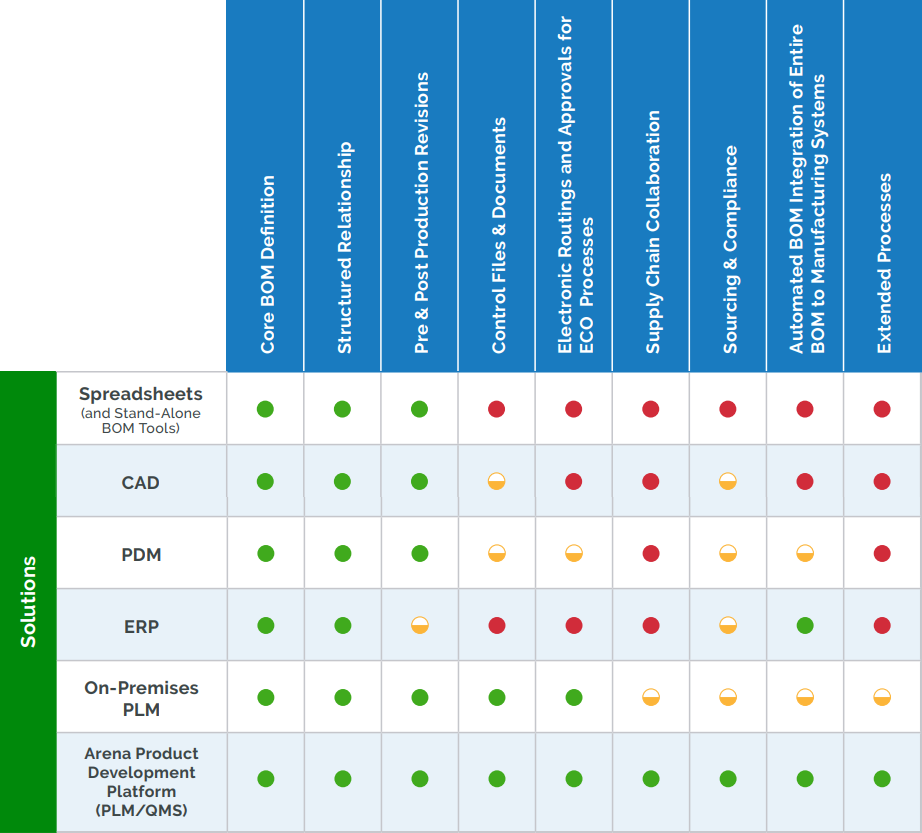EVOLUTION OF BOM MANAGEMENT SOLUTIONS
Over the past several decades, BOM management solutions have evolved from manual spreadsheets to more structured and intelligent digital systems which facilitate cross-team collaboration and allow for greater control and traceability of the entire product design.
Spreadsheets
Spreadsheets are useful if you are starting off with a basic single-level parts list; however, they are nearly impossible to maintain as products increase in complexity and require a multilevel BOM structure. Because spreadsheets are disconnected from the product record and engineering change orders, it is difficult for teams to control changes and keep track of the latest design revision.
Computer-Aided Design (CAD)
BOMs are typically exported from mechanical and electrical CAD (MCAD/ECAD) solutions for use in other downstream systems. Because these systems are disconnected and maintained by engineering, remaining team members (e.g., quality, procurement, manufacturing, suppliers) are unable to easily identify the latest BOM revision.
Product Data Management (PDM)
PDM solutions are used primarily by mechanical engineers to collaborate and manage design iterations. As with CAD solutions, they prohibit remaining product team members and supply chain partners from collaborating on designs and keeping track of the latest BOM revision.
Product Lifecycle Management (PLM)
 Enterprise Cloud PLM solutions centralize the entire product record, including BOMs, engineering change processes, quality documentation, and design files (electrical, mechanical, and software) along with associated drawings in a single system. Everything is connected, providing product teams and supply chain partners real-time access from any location. Automated change processes and revision controls are also applied to BOMs to ensure that everyone is always accessing the most current and accurate product information.
Enterprise Cloud PLM solutions centralize the entire product record, including BOMs, engineering change processes, quality documentation, and design files (electrical, mechanical, and software) along with associated drawings in a single system. Everything is connected, providing product teams and supply chain partners real-time access from any location. Automated change processes and revision controls are also applied to BOMs to ensure that everyone is always accessing the most current and accurate product information.














